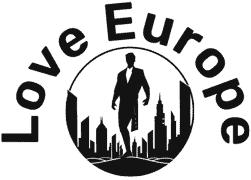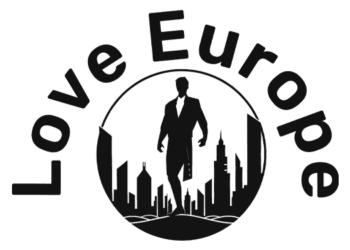Plokhy presents the longue durée history of Ukraine from the times of Herodotus to the fall of the USSR and the current Russo-Ukrainian conflict. Located at the western edge of the Eurasian steppe, Ukraine has been a gateway to Europe for many centuries, being a meeting place (and a battleground) of empires from Roman to Ottoman, Habsburg to Romanov.
Contentious legacy
He emphasises Ukraine’s pivotal role in global history.
For example, the disintegration of the Soviet Union in 1991 was precipitated by the Ukrainian referendum on independence, where over 90% of Ukrainians, including a majority in Russian-speaking Crimea, voted to leave the USSR. The ongoing conflict, however, is not just a contemporary geopolitical struggle but deeply rooted in history, particularly the contentious legacy of ‘Kyivan Rus’, a medieval polity founded by the Grand Prince Volodymyr (958-1015).
As Plokhy observes, most Russians believe that their state and nation originated in Kyiv, the centre of the medieval Kyivan Rus’ polity, that encompassed a good part of what is now Ukraine, Belarus, and European Russia. Kyivan Rus’ existed between the 10th and mid-13th centuries before disintegrating into semi-independent polities under the blows of the Mongol onslaught.
The Christianisation of Kyivan Rus’ by Volodymyr (cited by Putin as the founding moment of the Russian world) tied the region culturally to Byzantium and Eastern Christianity, laying the foundation for centuries of Russian claims to Ukrainian territory.
One of Putin’s obsessions in a 2021 essay was about foreign meddling in Russian history. But Volodymyr (to whom Putin dedicated a 17-metre statue outside the Kremlin) was himself a foreigner, a Scandinavian Viking who imposed Christianity on his Slavic subjects in order to bring them into the European world of Christendom. The Kyivan Rus’ myth originated in the mid-15th century, with Ivan III of Moscow asserting his dynasty’s Kyivan roots to legitimise his conquest of Novgorod.
Fuelled by a myth
This myth bolstered Moscow’s authority and justified further conquests of Ukrainian and Belarusian lands. Ivan’s victory marked the rise of an independent, authoritarian Russian state which he passed on to his grandson, Ivan IV (‘The Terrible’).
While Ivan IV expanded Muscovy’s rule by wiping of the post-Mongol Volga khanates, he was defeated in the Livonian War (1558-83) by a coalition of states that included Poland-Lithuania, Sweden, and Denmark. The 17th century saw Moscow captured by the Poles and their allies, the Ukrainian Cossacks. During this time, Muscovy separated itself from Kyiv and the Ukrainian lands both politically and in religious terms.
The Muscovites no longer regarding Kyivans as fellow Orthodox believers, claiming that they had been ‘corrupted’ by accepting the rule of Catholic kings and becoming open to the West. While Muscovy paused in its obsession with Kyiv and its history, the Ukrainians sought the aid of the Russian Tsar in 1648 when under their Hetman (leader) Bohdan Khmelnytsky, the Ukrainian Cossacks rebelled against Polish rule.
Transactional relationship
In Overreach (2022), journalist Owen Matthews observes that Khmelnytsky’s oath to the Tsar would set the pattern for centuries of Ukrainian-Russian relations right up to the 21st century — transactional, and dictated by expediency under pressure from outside powers.
Memories of the Kyivan heritage were again revived by Muscovy for protection of their Orthodox brethren (Ukrainian Cossacks) against the Polish Catholics who were duly defeated.
But the incorporation of the Ukrainian Cossack state into Moscow again sparked Cossack resistance in 1708, when their Hetman Ivan Mazepa allied with Sweden’s Charles XII against Tsar Peter ‘The Great’ only to be defeated at Poltava in 1709.
Catherine II destroyed the Hetmanate and integrated the Cossacks polity into the Russian Empire, but 19th-century Ukrainian nationalists revived their memory, observes Plokhy in The Russo-Ukrainian War.
The fall of the Romanov dynasty in March 1917 led to the creation of autonomous polities on the territory of the Russian Empire. The Bolshevik coup in October that year saw the destruction of Tsarist imperial institutions. In 1922, Lenin and Stalin clashed over the new Soviet state’s structure with Lenin proposing a Union of Socialist Soviet Republics with equal terms for all republics, including Russia. However, after his death, Stalin’s brutal policies led to the 1932-33 ‘Holodomor’ in Ukraine, resulting in the deaths of millions of peasants in the Ukraine.
At the time of the 1991 referendum, neither Gorbachev nor Yeltsin had imagined the Soviet Union without Ukraine, its second-largest republic and a key element of Russian imperial and Soviet history and mythology.
Restoring the imperial project in any form would depend on Russia’s ability to bring Ukraine back into the fold, observes Plokhy.
First draft of history
Matthews Overreach is a superb first draft of history exploring Putin’s decision to bring Ukraine back into the fold by launching his offensive in a bubble of COVID-induced paranoia.
Among eyewitness accounts of Ukraine’s resilience in the face of the Russian invasion, none is more searing than Yaroslav Trofimov’s Our Enemies Will Vanish (2024), which invites comparisons with Michael Herr’s Vietnam war classic Dispatches (1977).
Shoumojit Banerjee is a Pune-based journalist and editor
Published – September 26, 2024 08:30 am IST
Source link : http://www.bing.com/news/apiclick.aspx?ref=FexRss&aid=&tid=66f4d1006201494cb8ac93184f470107&url=https%3A%2F%2Fwww.thehindu.com%2Fbooks%2Froots-of-a-conflict-an-endless-war-on-the-edge-of-europes-frontier%2Farticle68681947.ece&c=6280928338353077800&mkt=en-us
Author :
Publish date : 2024-09-25 20:09:00
Copyright for syndicated content belongs to the linked Source.




